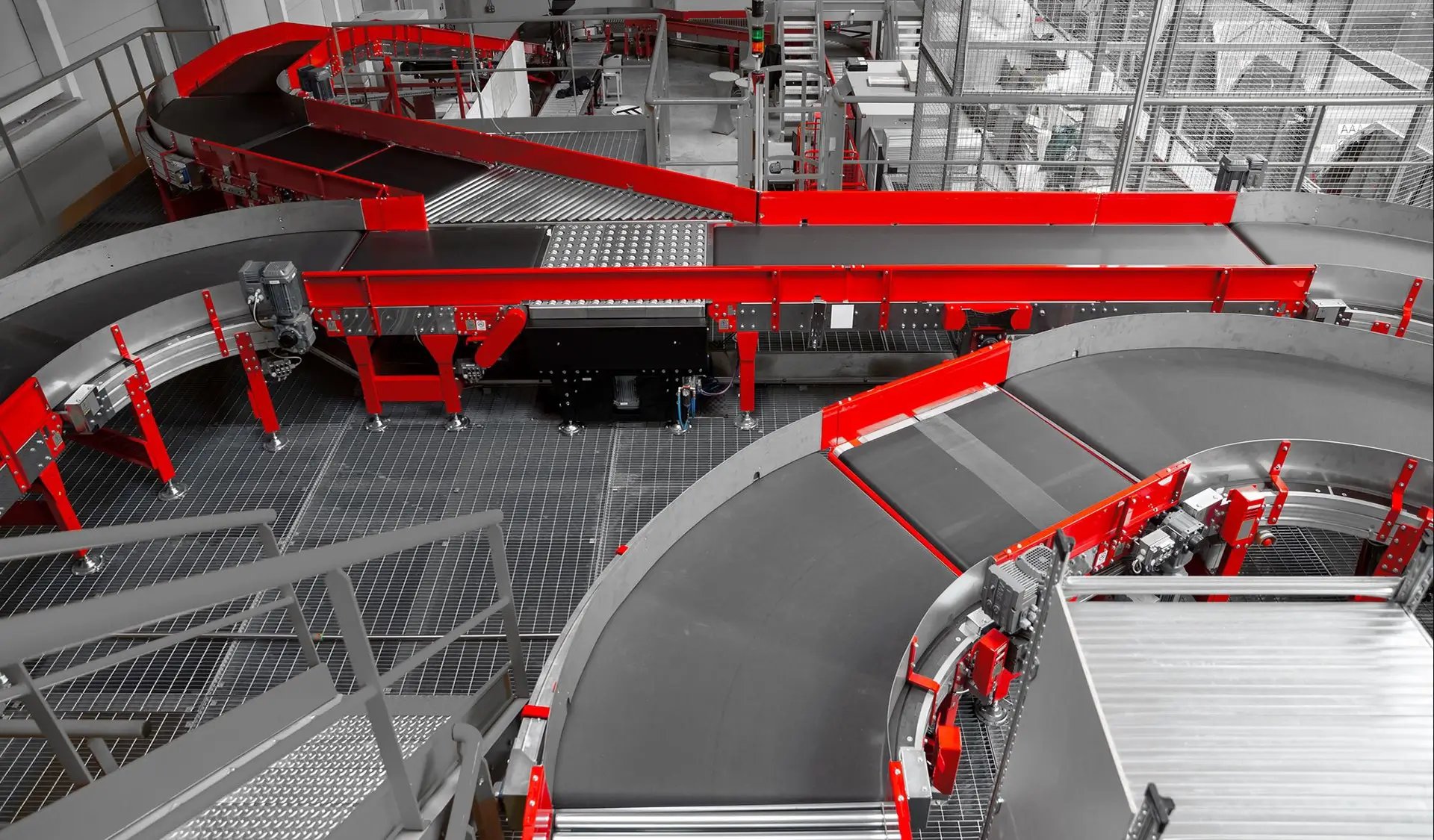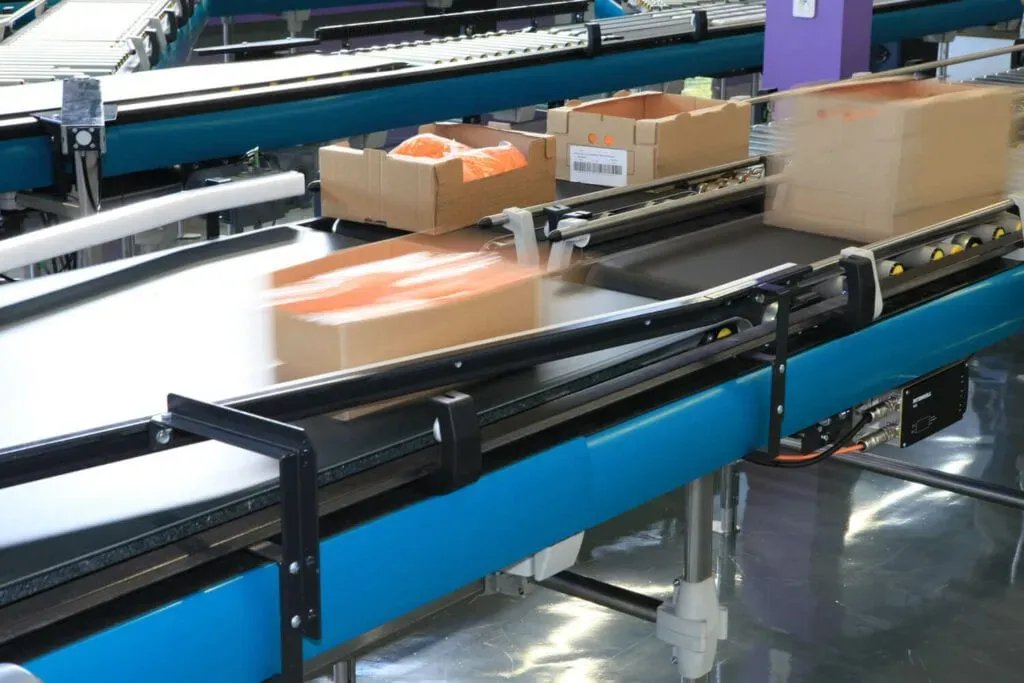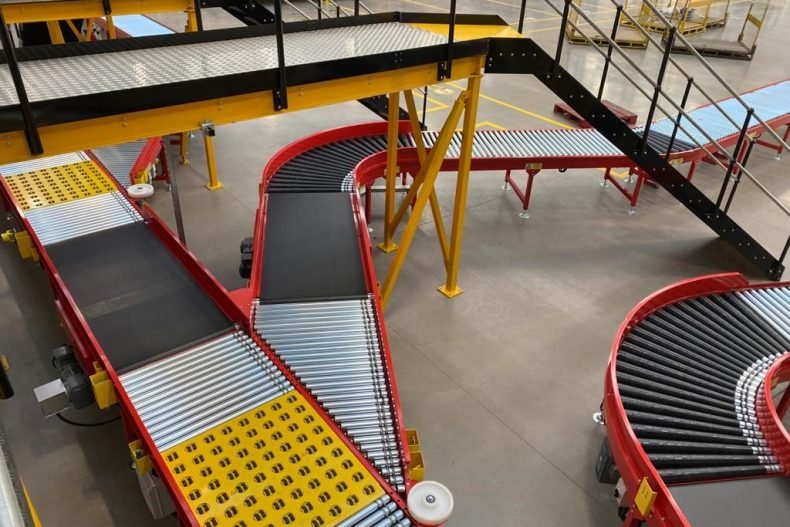Conveyor Systems in Cold Storage Material Handling
Conveyor belt systems play a vital role in the seamless and efficient movement of goods in cold storage. These systems are designed to withstand cold chain process conditions while maintaining optimal efficiency. Below are some of the key conveyor types used in cold supply chain logistics:
Flat conveyor belts – Widely used for transporting packaged goods like beverage industries and frozen foods, ensuring smooth operation.
Roller Conveyors – Ideal for moving bulk materials in crates, trays, or pallets.
Chain Conveyors – Suitable for transporting heavy loads, such as palletised goods, meat carcasses, or pharmaceutical shipments.
Modular Plastic Belt Conveyors – Designed for high hygiene environments, like the food industry and pharmaceutical products, ensuring compliance with industry standards.
Spiral Conveyors – Used to optimise vertical space in cold storage warehouses while maintaining integrity of temperature.
Applications of Conveyor Systems in Cold Storage
Conveyor systems enhance efficiency and safety at various stages to maintain product quality throughout the cold chain operations:
Goods-In Process: Reducing handling time and exposure to non-temperature-controlled environment.
Storage and Retrieval: Automated solutions move goods efficiently, often integrating with AGVs and temperature sensors for real-time monitoring.
Order Fulfilment: Ensuring rapid processing while maintaining temperature sensitivity.
Re-Packing and Co-Packing: Used with robotics for seamless packing processes, including blister packaging and cold chain packaging solutions.
Onward Shipping: Supporting refrigerated transport while minimising temperature fluctuations in shipping containers.
Ensuring Safe and Efficient Movement of Goods
By integrating cold chain technology and advanced automation into cold storage logistics, warehouses benefit from increased efficiency and cost savings. Automation reduces human error, enhancing cold storage solutions to meet consumer demand. Using high-quality, sustainable materials further improves operating environment sustainability.
Robotics and AI in Cold Storage Automation
To address the challenges in cold storage logistics, robotic automation and artificial intelligence (AI) have been increasingly implemented in warehouses. Key innovations include:
Automated Guided Vehicles (AGVs): Used for transporting goods within cold storage without human intervention.
Robotic Picking Systems: AI-powered robotic arms that can efficiently sort and move goods in freezing environments.
Predictive Maintenance: AI-driven monitoring systems that prevent breakdowns in conveyor systems and refrigeration units.
Smart Temperature Sensors: IoT-enabled sensors providing real-time data on storage conditions to ensure compliance.
Future Trends in Cold Storage Logistics
The cold storage industry is rapidly evolving, with several key trends shaping its future:
Increased Use of Renewable Energy: Solar and wind power are being integrated into cold storage facilities to offset high energy consumption.
Expansion of Cold Storage Infrastructure: Rising demand for frozen and perishable goods is driving the development of larger, more advanced cold storage warehouses.
Advancements in Insulation Technology: New materials are being developed to enhance insulation and reduce energy loss.
Blockchain in Cold Chain Logistics: Secure tracking of goods to ensure transparency and prevent fraud in temperature-sensitive supply chains.





